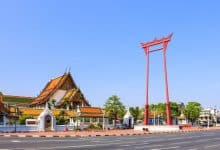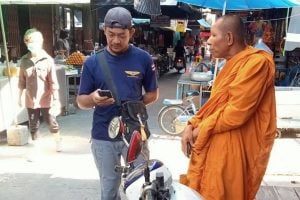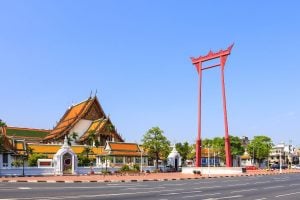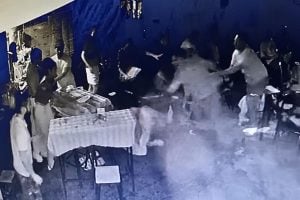Bangkok through time: A city in flux and its spirit of resilience
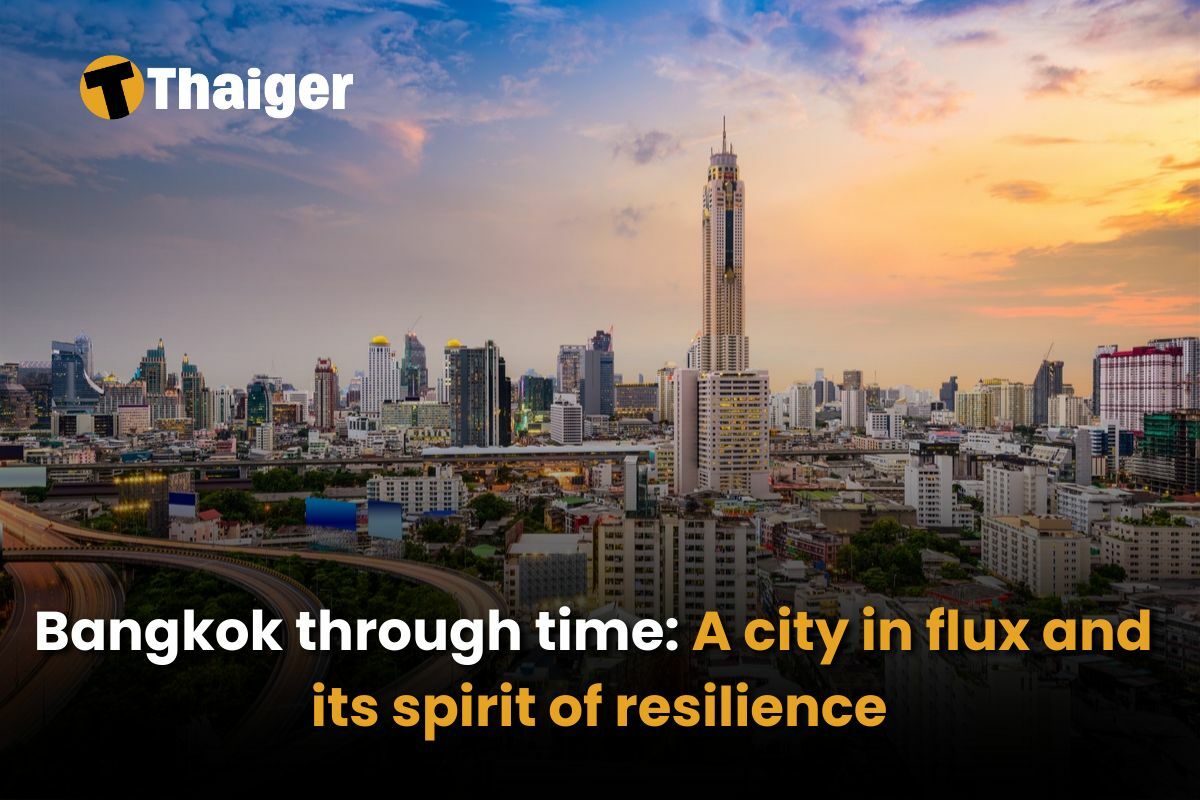
The recent earthquake, brief but unnerving, reminded residents that nothing, not even concrete or glass, is entirely fixed. And yet, in true Bangkok fashion, life carried on. Commuters returned to the skytrain. Street vendors lit their woks. The Chao Phraya kept flowing.
In this fleeting moment of disruption, the city’s rhythm barely faltered, its quiet resilience taking centre stage. It was a moment defined by adaptation and quiet resilience.
Bangkok, through time, has shown a remarkable ability to endure and to bend without breaking, which is not new. It’s been shaped by centuries of change, and perhaps nowhere is that spirit more visible than along the riverbanks. To truly understand Bangkok’s character, one must begin with the river that shaped it.
A city seen through the eyes of a stranger
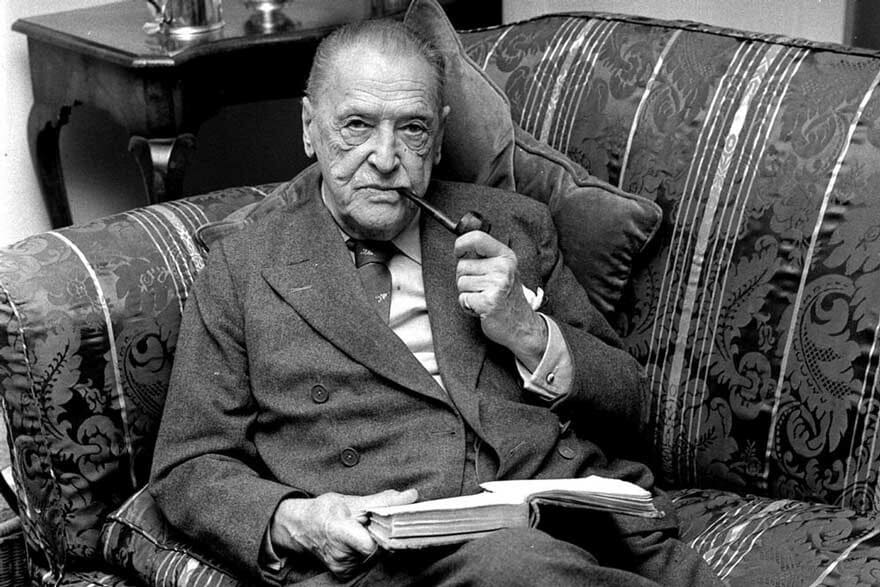
Bangkok, through time, has captivated visitors, each finding their own version of the city. To understand Bangkok’s deep connection to the river, it helps to see it through the eyes of those who first arrived here, wide-eyed and unsure.
On a sweltering day in 1923, the British writer William Somerset Maugham arrived by train in Bangkok. Already feverish and in the grip of malaria, he made his way to the Chao Phraya River.
He took refuge at The Oriental Hotel, where whitewashed verandas overlooked the busy waterfront. In The Gentleman in the Parlour, written between bouts of delirium and perspiration, he offered a conflicted portrait of the city, lamenting the traffic, the chaos, and the relentless heat. But later, once he recovered, something shifted when he walked along the river.
“The sight of it made me laugh out loud with delight. To think that something so marvellous could exist on this sombre earth.”
He wrote this after watching boats of all kinds, barges, sampans, steamers, glide past golden temples along the riverbanks.
His words captured the lasting beauty of the Chao Phraya—something people still feel today.
Nearly a century later, the Oriental still stands, reimagined as the Mandarin Oriental. The colonial structure where Maugham stayed is now the Author’s Wing, its balconies still catching the river breeze. And while the city around it has grown skyward and outward, the riverside retains its particular kind of grace.
Amid ferries, barges, and tour boats, you can still imagine those idle afternoons of another era, gin and tonic in hand, watching the city drift by. That same riverside charm says a lot about how Bangkok holds on to its beauty, even as everything else changes.
The river that shaped Bangkok through time

To trace Bangkok through time, follow the river that has shaped its soul. The Chao Phraya tells the story of the past and future; it is the spine of Bangkok, its cultural cradle, and its commercial heart.
It was here, in 1855, that Siam opened to the West with the signing of the Bowring Treaty aboard a British ship anchored midstream, an agreement that ushered in an era of international trade and cosmopolitan growth. The echoes of that moment still ripple through Bangkok’s global outlook today.
History flows along these waters, linking yesterday’s diplomacy to today’s diversity.
Today for everyone, the river remains essential. Commuters crowd ferries each day, going to work or sightseeing. Longtail boats deliver goods to the riverside markets, and in the quieter corners, traditional fishing families still cast nets, maintaining customs passed down for generations.
The water reflects the spires of Wat Arun in one glance and the neon glow of luxury towers in the next. Bridges, wharves, and shophouses cluster along its banks. Here, old and new aren’t in conflict; they’re in conversation. And that dialogue is the heartbeat of Bangkok through time.
Bangkok through time: The story told by buildings
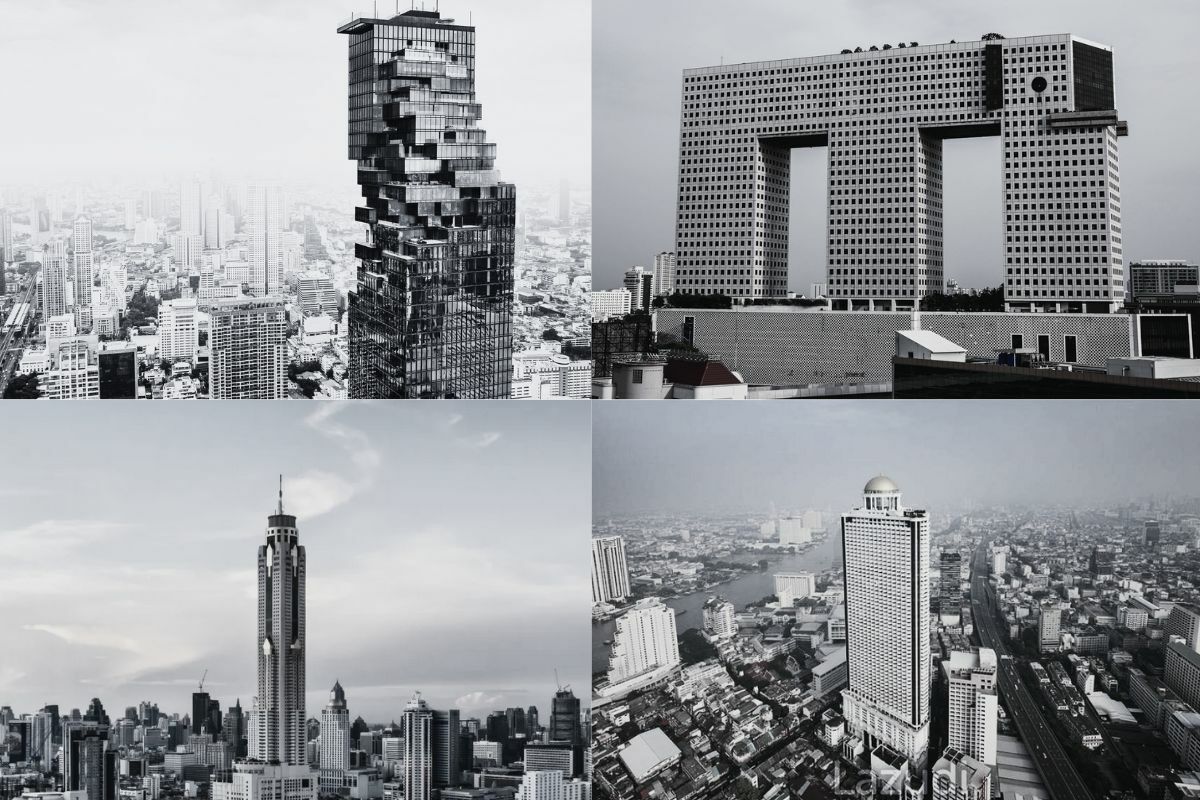
Bangkok’s cityscape is often astonishing, full of contrasts that show how the city has adapted, reimagined, and reinvented itself over time.
There’s the Maha Nakhon Tower, twisting into the sky. The quirky Elephant Building, both a national symbol and a unique architectural statement. The Robot Building, a postmodern nod to the digital age. And the Baiyoke Tower, once a symbol of 1990s economic hope, is now a permanent part of the skyline. Each of these landmarks tells its own story, a chapter in Bangkok’s diverse architectural journey.
You’ll also find the sleek elegance of the Rosewood Hotel, and in a quiet corner, the Jim Thompson House, a teak gem filled with stories of silk, mystery, and mid-century style.
Bangkok’s architecture acts like a living map of its past and present, constantly evolving while keeping traces of what came before. Teakwood shophouses sit beside modern condominiums. In neighbourhoods like Talad Noi, rusty auto parts share space with vibrant murals and trendy art galleries.
Along the riverside, what was once quiet is now a creative, walkable district, full of life and rooted in history.
Through this mix of old and new, Bangkok doesn’t just grow—it remembers.
Old meets new
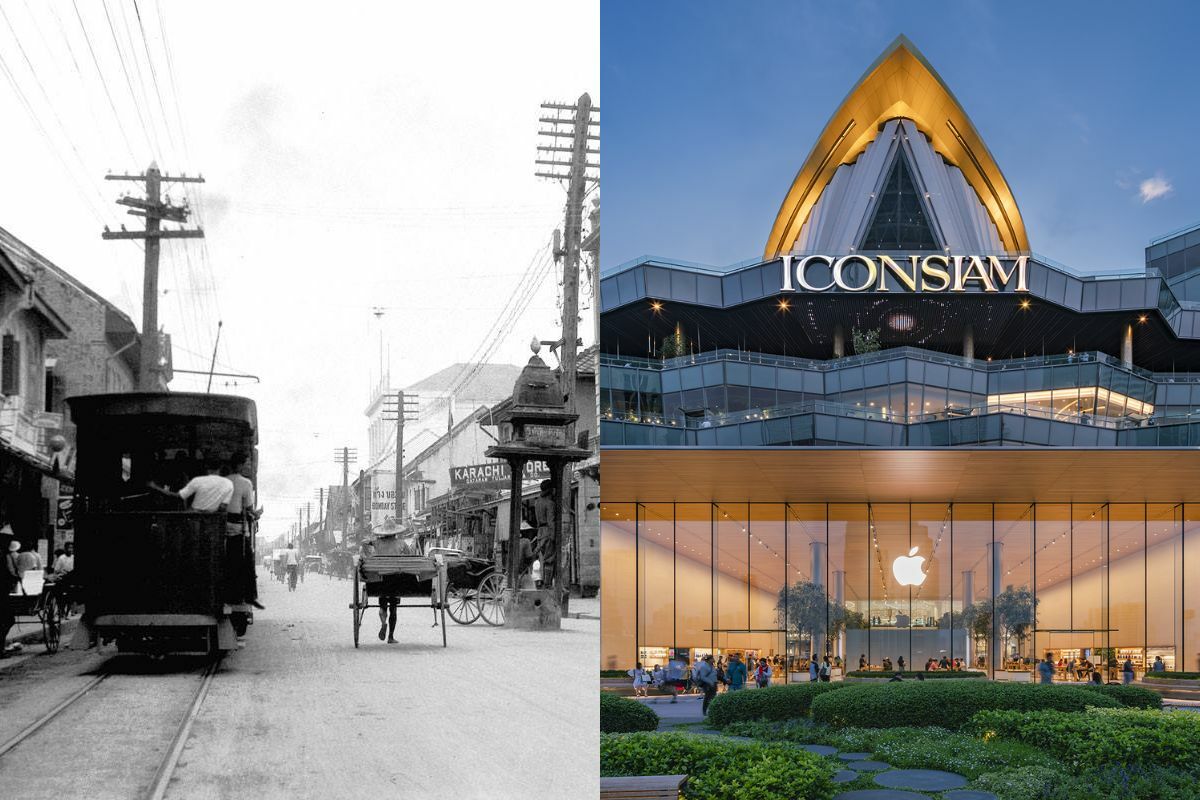
Once, an elephant trail hugging the river’s curve became Bangkok’s first paved street in the 1860s. Today, Charoen Krung is home to ICONSIAM, a glittering super mall perched on the same riverbank where wooden sampans once floated by. Progress here doesn’t erase the past, it builds on it.
Step away from the river, and Bangkok reveals itself, block by block, chapter by chapter.
In the narrow alleys of Bangrak and Chinatown, life moves to a rhythm that defies time. Shrines glow with incense, and noodles are still served from century-old carts. Wooden shutters creak open every morning, and monks in saffron robes pass quietly beneath weathered balconies, collecting alms as they have for generations.
But just a few BTS stops away, a different Bangkok rises.
In Thonglor and Sathorn, clean lines and mirrored towers stretch toward the clouds. Rooftop bars serve craft cocktails above tangled sois. Japanese bakeries, minimalist galleries, and co-working spaces nestle beside noodle stalls, barbershops, and humble spirit houses.
This is Bangkok’s magic, a city that stretches forward without ever letting go of its roots.
Bangkok has always been a city of contrasts of sacred and profane, serene and chaotic, decaying and dazzling.
If Somerset Maugham were to arrive today, drawn again to the river, he might struggle to recognise the skyline. But place him on a veranda at the Author’s Wing, let him watch the boats glide past the golden wats, and he’d understand.
The city’s essence is still intact.
The traffic still snarls, the heat still clings, and the Chao Phraya still flows.
And without a doubt, He would still love it.
Latest Thailand News
Follow The Thaiger on Google News:

